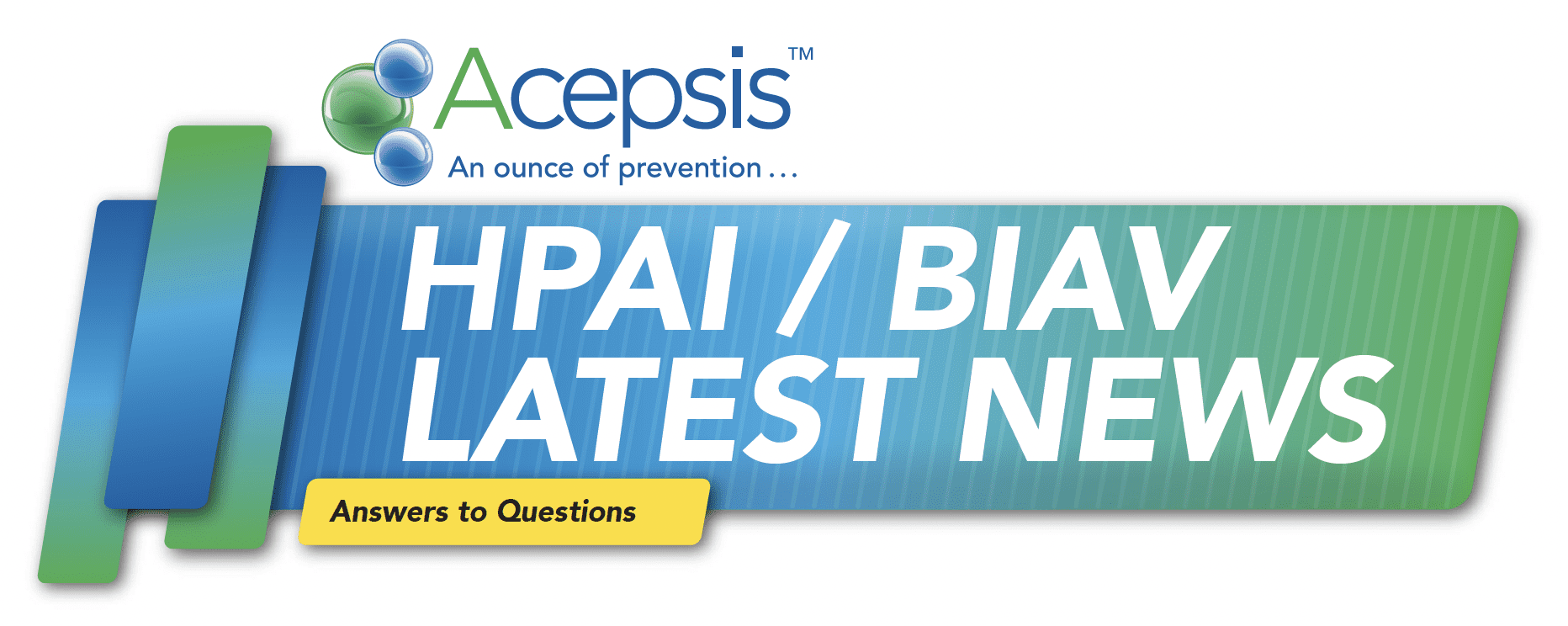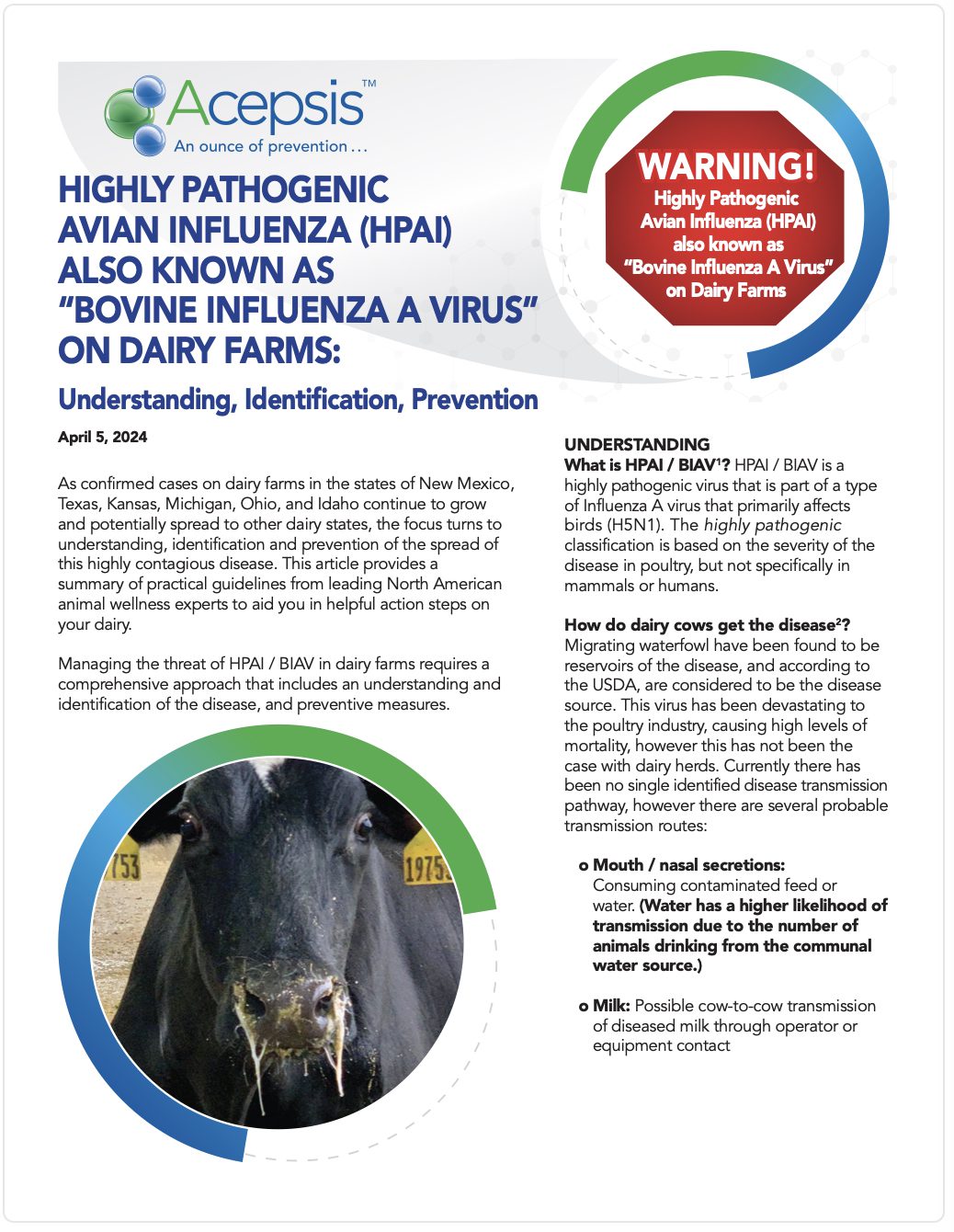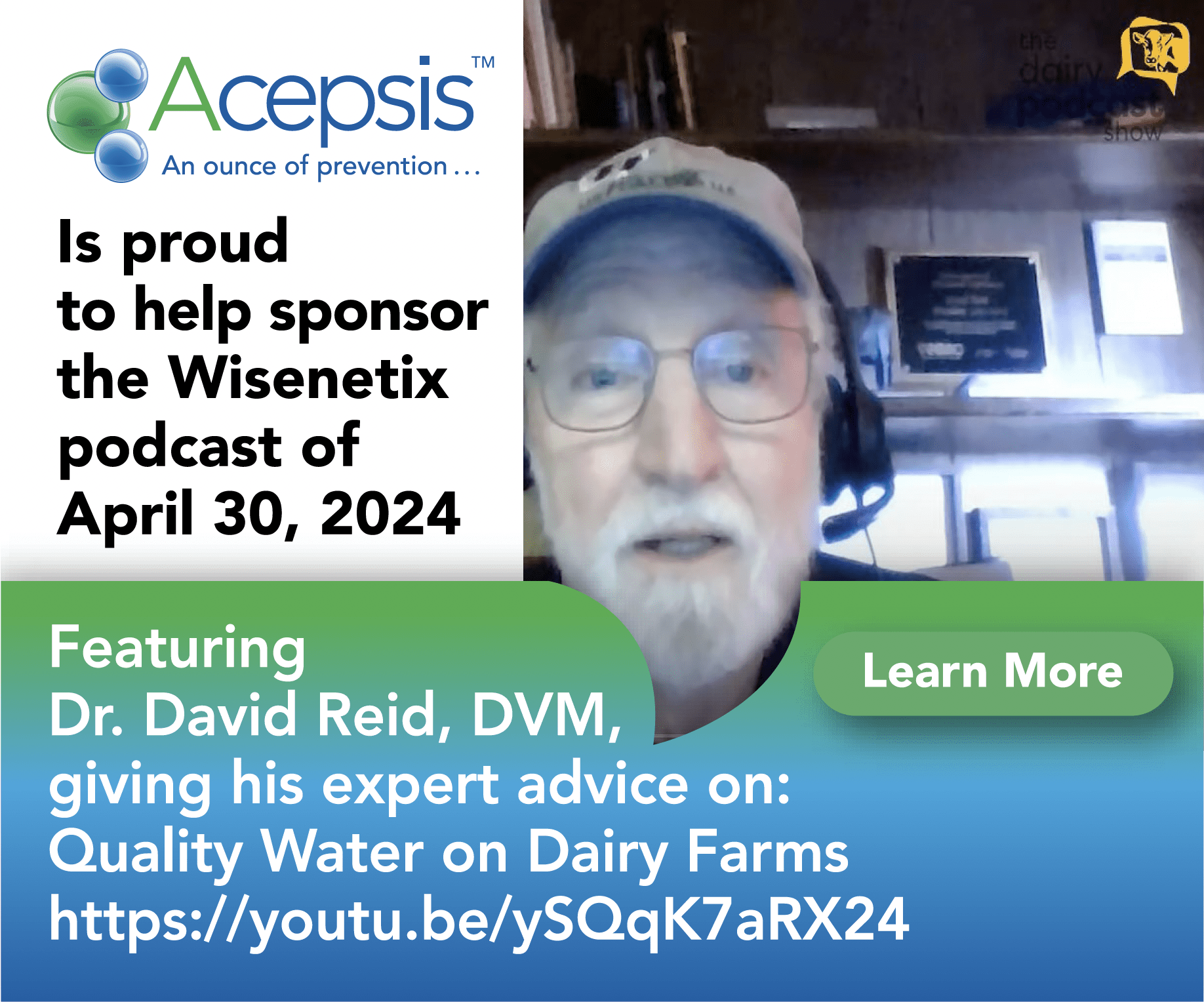As an innovative company that brings animal hygiene technologies into the animal agricultural and veterinary market sectors, to improve the wellness of the animals and agricultural production sustainability, Acepsis, LLC feels the importance of keeping the dairy cattle industry informed as the incidences of HPAI (Highly Pathogenic Avian Influenza) / BIAV (Bovine Influenza Avian Virus) continue to grow.
Download our full article on what the disease is, what occurs, and methods to lessen the impact on your dairy farm.





